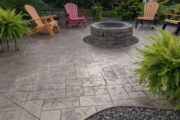How To Use Concrete For Office Buildings In Lemon Grove?
Concrete is an exceptional building material, especially for office structures, due to its resilience, versatility, and environmental sustainability. However, harnessing its full potential requires knowledge and careful planning. Below are seven practical tips for using concrete when constructing office buildings.
- Utilize concrete’s inherent thermal mass to create energy-efficient buildings. It absorbs, stores, and later releases heat, helping to stabilize indoor temperatures and significantly reducing the building’s HVAC needs, thereby making the office more sustainable.
- Office buildings often need to support significant loads such as heavy equipment, files, and foot traffic. Concrete provides the structural integrity needed to endure such weights. Opt for high-strength concrete where structural requirements demand, and employ professional engineers to calculate and design the concrete mix to ensure a robust, safe structure.
- Embrace concrete’s aesthetic versatility. It can be cast in almost any form and finished in numerous ways, from sleek and shiny to textured and rustic. Concrete walls can be left exposed, polished, or painted to create diverse looks, contributing to the office building’s unique architectural expression.
- Thick concrete walls and floors provide excellent sound insulation, an important aspect for any office building. Incorporating concrete can help create quiet, productive workspaces, enhancing staff comfort and productivity.
- Concrete is an inherently fire-resistant material, increasing the safety of the office building. This makes it an ideal choice for building structures and compartments, helping to limit the spread of fire should one occur.
- Choose concrete for its durability and low-maintenance properties. Unlike wood, it doesn’t rot, rust, or decay, making it a cost-effective choice for the long term. A concrete building, when correctly constructed, requires less maintenance, translating to cost savings over the life of the building.
- Consider the use of precast concrete elements for speed and precision. This modern method of construction enables parts of the building to be manufactured off-site in a controlled environment, ensuring high quality, then transported and assembled on-site. This approach can expedite the construction process and enhance the building’s overall quality.
FAQs
Is Concrete Suitable For All Climates?
Yes, concrete is adaptable to a wide variety of climates, from cold to hot. Its thermal mass properties make it efficient in retaining heat in colder climates and repelling heat in warmer ones. However, special considerations may be needed during construction in extreme conditions.
Is Concrete Environmentally Friendly?
Yes, concrete is sustainable. It is made from abundant natural materials, requires less energy for construction, and is recyclable. Moreover, concrete buildings have long lifespans and energy-efficient characteristics, reducing their overall carbon footprint.
Does Concrete Offer Flexibility For Future Office Modifications?
Yes, despite its solidity, concrete buildings can be remodeled. Interior walls can be added or removed, and new floors can be added to existing structures, providing flexibility for future modifications.
Conclusion
Concrete is a remarkably versatile and robust material that offers numerous advantages for office buildings. These include sustainability, structural integrity, aesthetic versatility, noise reduction, fire resistance, longevity, and cost savings. By incorporating these tips into the construction plan, developers can harness the full benefits of concrete, ultimately achieving durable, efficient, and appealing office spaces. For more information, contact Concrete Contractor Lemon Grove at (619) 648-5335.


